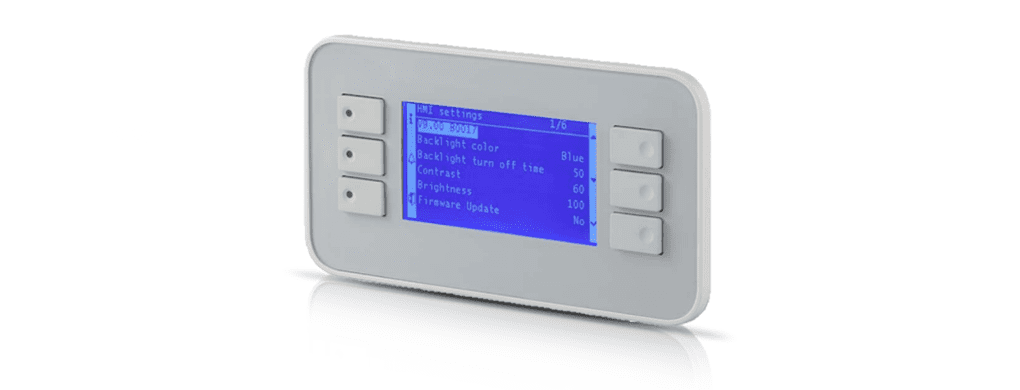
HMI precisely tailored to the needs and capabilities of the user
With over 50 years of experience, AL-KO Air Technology designs and manufactures reliable ventilation and air conditioning equipment for good and clean air in all types of indoor spaces. To make these devices as easy and intuitive to use, the manufacturer offers a comprehensive portfolio which HMI tools can be selected depending on the user’s requirements, skills and tasks:
- AL-KO Switch
- AL-KO HMI Room
- AL-KO HMI Room Lite
- AL-KO HMI Facility
- AL-KO HMI Basic
- AL-KO Touch Control
- AL-KO Remote Control
- Interface to building automation BACnet / Modbus
The AL-KO Switch is a solid, easy-to-use HMI tool for basic functionality, allowing switching between On, Off and Automatic and up to three airflow levels. The more functional HMI Room and the HMI Room Lite in a modern design allow for setpoint adjustment, a presence function and manual fan speed setting, among other features. For comprehensive operation, AL-KO offers the AL-KO HMI Basic installed in the control cabinet or the AL-KO HMI Facility in the equipment room.

Touch Control and Remote Control
AL-KO Touch Control and Remote Control allow full control via a modern and intuitive user interface. The former are touch panels that are available in four screen sizes and allow the operation and management of even multiple AL-KO systems. AL-KO Remote Control is a web-based servicing system. Via any terminal device with internet access, ventilation and air conditioning units can be controlled from anywhere in the world. Individualized dashboards and operable web graphics enable fast and intuitive use. Finally, interfaces to the building automation system BACnet / Modbus enable, among other things, the specification of setpoints and the time program by the building automation system.
As much information as needed
“Our philosophy is that each user is only shown as much information and functions as they need,” explains Product Manager Mark Mandl. Using different password levels, for example, only the usage-related data is shown to the end user, while a service technician or system integrator is shown all setting options. “We don’t want to confuse end users with too much information and setting options that are irrelevant to them,” emphasizes Mandl.
